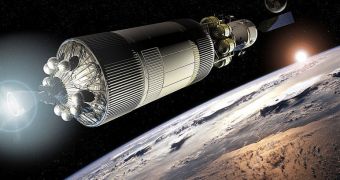The American space agency will make a special announcement today, NASA spokespersons said this morning. It was revealed that the nature of the announcement concerns the deep space human exploration program that the organization chose to follow.
NASA officials will be making the statement at 3:30 pm EDT (1930 GMT), Space reports. The press will be informed of the decisions the space agency arrived at via a teleconference.
The media advisory the agency released indicates that its representatives will “discuss an agency decision that will define the next transportation system to carry humans into deep space.”
Such an announcement has been a long time coming, analysts say, given the path NASA and the US Administration chose when Project Constellation was canceled. The decision left a huge, 5-year gap in America's space capabilities, that the agency now needs to fill.
Back in 2010, US President Barack Obama made his vision about space exploration very clear – NASA was to put astronauts on a near-Earth object (NEO) by 2025, and a whole crew on Mars by the mid-2030s. These objectives are not that far-fetched, experts say.
It could be that today's announcement will mark an important step in defining the trajectory that the American space agency will take over the next couple of decades. The moment is well chosen, given the retirement of the three orbiters by July.
This move marks the conclusion of the 30-year-old Space Shuttle Program, which has been a stay at NASA since it first appeared. Now, it needs to be replaced by an equally-ambitious and challenging program, one that could proudly replace the SSP.
Congress mandated the agency to create a heavy lift delivery system as soon as possible, and to focus its funding on ensuring that private corporations manage to create viable spacecraft. But the fact remains that NASA has no manned spacecraft of its own.
It would definitely be interesting to know what direction NASA chose for its medium-term development. Keep an eye on this space for more details.

 14 DAY TRIAL //
14 DAY TRIAL //